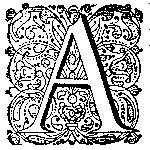Performing Gender Through Dialogue
A Computational Approach to Male and Female Speech in Dutch Drama (1600-1800)
DOI:
https://doi.org/10.51750/emlc19653Keywords:
Dutch drama, computational analysis, cross-dressing, gender performanceAbstract
This article presents a computational approach to the relationship between gender and character speech in early modern Dutch drama. It evaluates the possibility of automatically classifying gender based on the speeches of 1141 characters and character groups from 98 early modern Dutch plays (1613-1786). The experiment combines three approaches to gender classification: lexical, semantic, and stylistic. The results show that each approach fails to reliably capture distinctions between male and female speech in early modern Dutch drama, in contrast to similar studies of gender distinctions in other literary corpora. The inability to measure a gender binary in Dutch dramatic discourse indicates that gender generally was not performed through the vocabularies of Dutch male and female characters. The absence of clear gender distinctions in character speech is read as a product of the persistent tradition of cross-dressing in the Dutch Republic, creating fictional realities in which gender became fluid and complex.
Downloads

Published
Issue
Section
License
Copyright (c) 2025 Lucas van der Deijl, Alie Lassche

This work is licensed under a Creative Commons Attribution-NonCommercial 4.0 International License.





